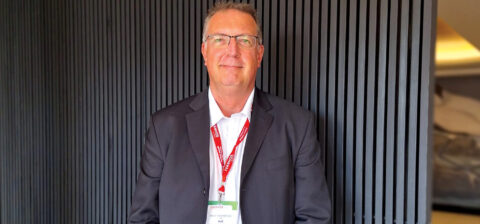SA Mining
Electric Vehicle Market Set To Soar
SA Mining recently caught up with Khanyiselo Kumalo, energy analyst at GreenCape, to chat about the growth of the electric vehicle market globally and in Africa.
How important is the EV market to the global economy and that of Africa?
Clean energy has become a priority for many leading countries and the consensus on electric vehicles (EVs) being a key driver to achieving that is rising. The EV market is also critical to sustainable economic growth. The global market for EV was valued at R1.6-trillion ($118.9-billion) in 2018 with 783 000 units sold. With the decline in internal combustion engine (ICE) vehicles as a result of cheaper battery technologies, and countries’ emissions commitments, the EV market is expected to show rapid growth. Africa’s automotive market is underdeveloped when compared to global EV leaders like China, Europe and North America. Research by Deloitte indicates that Africa’s underdeveloped nature is the very reason the continent possesses ample room for growth and development across the value chain. And while the EV market is just emerging in Africa, we only need to look at the value of the ICE market to see the potential. When we consider the ICE market in South Africa, revenue from the automotive sector was more than R500bn ($35.6bn) in 2017, with the industry employing 900 000 skilled, semi-skilled and unskilled employees. The potential EV market here is about R500bn, with opportunities for the entire vehicle value chain from suppliers to battery producers, infrastructure installers and component manufacturers to name a few.
What segments of industry does it affect?
If the transition from ICE to EVs is not managed well, and if Africa doesn’t stay ahead of the curve and tap into the growing EV market in Asia, Europe and North America, then there will probably be job losses and these will not be limited to the automotive industry. The EV market will also have an impact on the liquid fuel dynamics (as oil demand is expected to decrease over time) and on government revenue. This is especially the case for SA. On the positive front, there is a balance of trade and macroeconomic benefit to the country for increased uptake in EVs. Different jobs and new business models will emerge – for instance, fuel companies potentially rolling out charging infrastructure. There will also be notable impacts to meeting GHG and energy security targets.
Can you trace the growth of the EV market over the past five years?
With the help of generous incentives and an enabling policy environment, the EV market has grown exponentially over the past five years. Cumulative EV sales reached four million in 2018 with over 165 different models available. This number was projected to reach five million in the first quarter of 2019.
The rate of growth is interesting. It took more than five years for EV sales globally to reach the 1% threshold. And it took just over a year to move from the 1% to 2% global sales mark and six months to reach 3% sales. In contrast, the SA market has seen a notable decrease in sales from 2015 onwards. This speaks to the need for a market step change for any significant growth to be recognised.
What is the projected growth of the EV market globally and for Africa?
The EV mix is continuously changing, the number of available models is increasing and this is on the back of more automakers making commitments to manufacture EVs from 2019 onwards. Growth is expected to also increase and this is enabled by battery technology improvements and extensive infrastructure network roll-outs.
We also foresee electrification of public transport gaining traction. This is especially true to buses and government transit fleets as they demonstrate the best business case for electrification. EV growth in SA is currently driven by climate-conscious consumers who are able and willing to prioritise the cost to the environment when purchasing a vehicle. We expect that EVs will become attractive to the emerging middle and new middle income group when cost-comparable EVs with increased range are made available to the SA market. And because the majority of public transport users are the poor and disenfranchised, the electrification of public transport is where we foresee most commuters in the low income bracket will gain access to this technology. We are projecting a medium- to long-term timeline for any significant growth without enabling government support and policy certainty.
Taking the rest of Africa into account, there is a big opportunity for uptake in the 2/3-wheeled EV segments. The extensive roll-out of RE through microgrids presents an opportunity for solar-powered charging infrastructure.
What are the key challenges associated with this market?
In South Africa there are a number of challenges which other emerging economies are likely to also experience. These include products that aren’t fit for market, high import duties, and lack of policy certainty, skill and finance.
In terms of products that aren’t fit for the market, cost is one constraint. EVs are also not yet comparable to ICE vehicles within a similar price range. In addition, even if someone can get an EV in their price range, they might not find one that fits their lifestyle due to limited product choice.
High import duties are a constraint, especially in SA. Currently electric vehicles are subjected to 25% import duties while buses and trucks carry a 20% duty. In comparison, ICE vehicles incur import duties of 18%. Electric vehicles are further subjected to 17% ad valorem (luxury tax duty) because of the battery price pushing the overall cost of the vehicle into a luxury threshold. Total taxes on electric vehicles and hybrids is 42%, which is significant.
Policy uncertainty and a lack of policy directives on local EV manufacturing presents an investment risk. Until enabling policies are put in place that provide investors with peace of mind and inspire investor confidence, we will continue to see a lack of investment and risk-taking in this space.
As we transition to an EV-led vehicle industry, we will need appropriate skills to facilitate market growth. There are currently not enough skills in the automotive market and ancillary services sectors to adapt to the growth of the EV manufacturing section. We need to upskill practising technicians to ensure the transition towards electric mobility is possible. This training is also important for first-level emergency responders, dealership and aftermarket services as these sectors also play an important role in a functioning transport sector.
Finally, a major obstacle – favourable finance terms for EV investments and project development. In the context of all the other barriers, the risk for lenders is still high, which results in short tenors of debt and high interest rates. This means that investors just don’t have enough equity to secure the debt they need. We really need innovative finance tools and government assistance that are able to absorb some of the risks associated with financing this nascent market.
What are some of the opportunities arising from the development of EVs for Africa?
There are three emerging investment opportunities in the EV market.
- Local manufacturing of EVs for the export and domestic market. This opportunity is particularly attractive to greenfield investors.
- The opportunity to manufacture and/or assemble electric bus components.
- Local production of lithium-ion batteries (LIB) especially with Africa being home to some of the raw materials needed in the battery chemistry.
Are SA and the rest of Africa suitably positioned to take advantage of the EV market?
The African continent is well placed to take advantage of the EV market. This is especially true for most African countries faced with the ongoing challenge of high fuel prices and intermittent supply. Commodities such as cobalt, lithium and manganese are some of the raw materials used in cathode chemistry of LIB and these are available in Africa. This is but one way that Africa can take advantage of the EV market. Of course, none of this will come to fruition without clear policy and legislation that will position the continent as a key contributor to the EV value chain and not just a dumping ground for banned ICE vehicles from western countries.
Is there an opportunity for SA to become an EV producer?
SA is well positioned to become a producer of EVs but we also need to be realistic in understanding that this is not something that will happen overnight and that there are some factors that need to be considered:
The majority of the vehicles manufactured in SA are for export markets. This is because SA does not have economies of scale to justify local manufacturing solely for the domestic market. There are also concerns that this market is getting smaller. The trade agreements that SA has with the European Union (EU), United States (US) and Southern African Development Community coupled with a cheap labour force and political stability relative to other African countries are some of the factors that make SA a suitable manufacturing destination.
Regions in the EU and US are already driving the uptake of EVs at a global level. Concerns around urban air quality are seeing restrictions being put in place on the sale of ICE vehicles and tighter fuel regulations being implemented. All of which will not be possible without a significant share of vehicle electrification being incorporated. SA is then left with no choice but to transition towards EV manufacturing or run the risk of loss in the trade market which would affect the economy and job security in the automotive industry.
Highlight some of the initiatives associated with the EV market currently under-way in SA and Africa.
An EV task team set up by the Western Cape Government is focused on fostering maturation and growth of the industry. The aim is to set the tone and momentum for EVs in the rest of the country. Despite challenges, we are seeing more original equipment manufacturers committing to bringing EVs to the SA market. Potential market entrants include Audi, Mercedes, BYD and Volvo. Global EVRT will be hosting Africa’s first EV road trip from Johannesburg to Cape Town from 2 to 10 October. We are also anticipating more charging infrastructure being rolled out over the course of the year by original equipment manufacturers (OEMs) and potentially some fuel companies.
EVIA is an industry association that was set up to bring together key stakeholders across all spheres (government, industry and academia) under the umbrella of creating an enabling environment for the growth of SA’s EV market.







 Sign-up and receive the Business Media MAGS newsletter OR SA Mining newsletter straight to your inbox.
Sign-up and receive the Business Media MAGS newsletter OR SA Mining newsletter straight to your inbox.